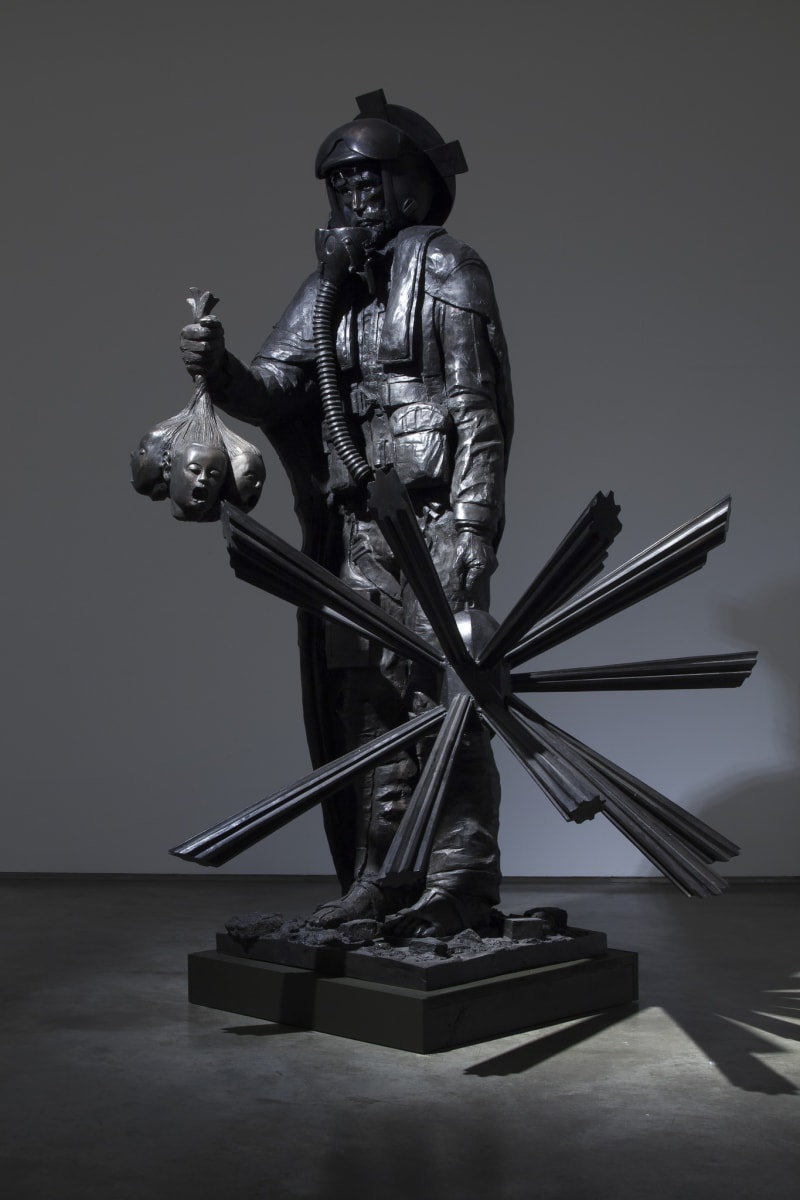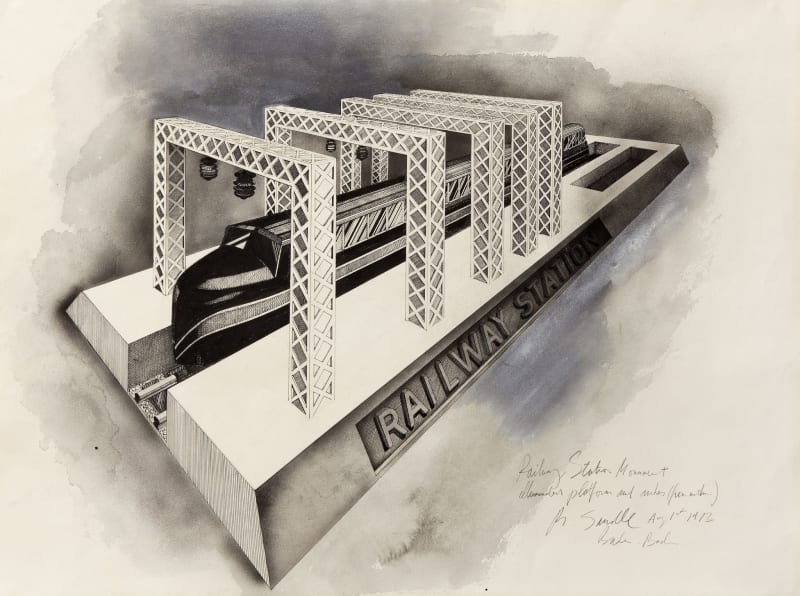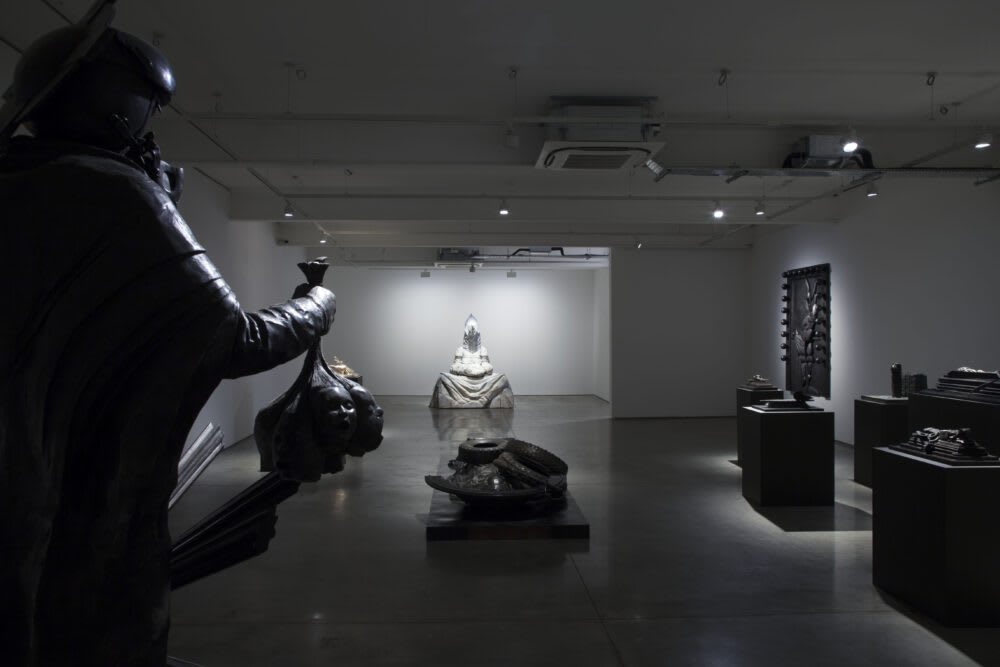Overview
“A memorial is a mock memory. It’s a question of what is remembered, and what society agrees is worth memorialising.” – Michael Sandle.
Flowers Gallery is pleased to present a survey of works by British sculptor Michael Sandle, exploring the enduring themes of mortality, memorialisation, and remembrance. The exhibition Time, Transition, and Dissent brings together large-scale sculptures, works on paper, and maquettes for hypothetical public monuments from the 1970s to the present day.
In direct response to the horrors of the twentieth and twenty-first century, Sandle’s work has formed a critique of what he describes as ‘the heroic decadence’ of capitalism, and the exertion and abuse of power in global conflict, politics and culture.
Catafalques or tomb-like structures are recurring motifs, appearing throughout the work of several decades. The central bronze sculpture, Caput Mortuum: A Commentary depicts a makeshift tomb apparently built amid the ruins of the 1982 Falklands War. A shrouded figure is surrounded by debris from the battlefield, with tyres laid in the style of commemorative wreaths, which Sandle sees as “framing and concealing its identity”, while microphones, which have been carefully arranged at the head, represent the mechanisms of media broadcasting.
The shrouded figure is seen in several maquettes for as yet unrealised funereal memorials such as Untergang des Dritten Reiches (The end of the Third Reich), and Memorial with Tyres, marking a long running fascination with the symbolic agency of the anonymous body to represent both personal subjectivity, and shared universal experience. The assemblage of wreckage, jerry cans and military helmets surrounding the figure can be seen to reflect specific memories of the devastation of Sandle’s childhood home in Plymouth and of growing up amid the physical and metaphorical ruins of World War II. As he has said: “rubbish dumps, tips and rubble… have become, for me, melancholy symbols of destruction”.
Two of the more recent sculptures, The Sound of Your Silence, made in response to the Iraq war in 2009, and As Ye Sow So Shall Ye Reap: An Allegory, produced in 2015, memorialise the lives of innocent civilians caught in the crossfire of modern day conflict, particularly the suffering of children.
Not all of Sandle’s work relates to war, however. For example, a new bronze sculpture titled The Suicide/He took the A Train, on display for the first time in this exhibition, responds to stories of a more individual nature. Exploratory works on paper produced during the planning of this particular memorial, executed between the early 1990s and 2000s, are included in a display of Sandle’s drawings and prints in the upstairs gallery, demonstrating the often lengthy gestational periods between the idea and realisation of Sandle’s ambitious projects.
Drawing and printmaking have proved important ways for Sandle to resolve ideas for sculptures which may or may not be made, often incorporating multiple perspectives and drawing styles within the same work. Included in the exhibition are working drawings for one of his most well-known public sculptures A Twentieth Century Memorial (Tate collection). Bryan Robertson has written that Sandle’s drawings are “among the most beautiful and haunting of the twentieth century and have to be considered on equal terms with the sculpture.”
Sandle’s handling of contemporary subject matter is firmly rooted in artistic tradition, which Marco Livingstone has referred to as “history in the present tense”. Emphatically opposed to the notion of sampling or the ‘empty gesture’, he accesses the past through a set of shared cultural references to examine the transience of the present moment within the continuum of history. As Jon Bird has written, “Our nostalgia for the signs of the past provides a basis for Sandle’s reframing and reordering of the landscape of experience, reminding us of the necessity to retrieve from the myths of the past, the foundations of historical memory and the realisation of our own mortality.”
Works
















































